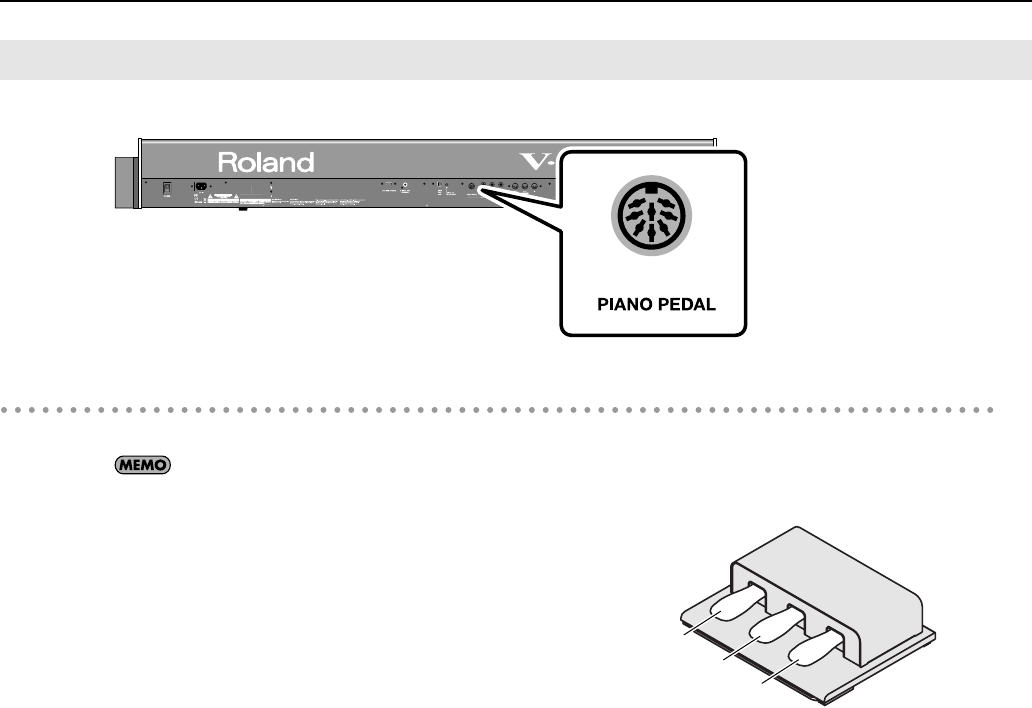
20
Getting ready
Connect the cable of the included piano pedal to the PIANO PEDAL connector on the V-Piano’s rear panel.
About the pedals
The pedals perform the following operations. You’ll use them mainly for playing piano.
By changing the pedal assignments, you can change what the V-Piano does when you press the sostenuto pedal or soft
pedal. For details, refer to “Pedal settings (4. Pedal)” (p. 84).
fig.Pedals.eps
Damper Pedal (right pedal)
While this pedal is held down, notes will be sustained for an
extended time even if you release your fingers from the keyboard.
The length of the sustain will change subtly depending on how
deeply you press the pedal.
On an acoustic piano, holding down the damper pedal will cause
the strings for notes other than the ones you actually play to vibrate
in sympathy with what you’ve played, producing a rich resonance.
The V-Piano simulates this sympathetic vibration (damper resonance).
Sostenuto Pedal (center pedal)
The notes you are pressing when this pedal is depressed will be sustained.
Soft Pedal (left pedal)
If you hold down this pedal, the notes will be softer in tone.
The softness of the tone can be varied subtly by changing the depth to which you press the pedal (p. 48).
You can adjust the sensitivity of the soft pedal (p. 48).
Connecting the piano pedal
Soft Pedal
Damper Pedal
Sostenuto Pedal
V-Piano_e.book 20 ページ 2009年1月28日 水曜日 午前9時10分


















